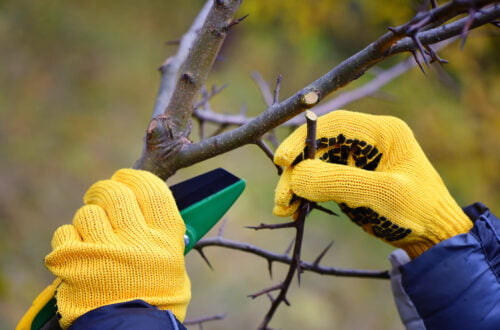The History on Thanksgiving
Thanksgiving is a holiday that is all about giving thanks, spending time with family, and eating good food. It’s a day that has been celebrated in the United States for centuries, and it all started with the Pilgrims. The Pilgrims were a group of English people who came to America in 1620. They were looking for religious freedom and a new place to call home. The history on thanksgiving is rich with many different traditions.

What is Thanksgiving
Thanksgiving is a national holiday celebrated in the United States and Canada. It is a day for giving thanks for the blessings of the past year. Thanksgiving is celebrated on the fourth Thursday of November in the United States and on the second Monday of October in Canada. In America, the holiday is traditionally a time for family gatherings and feasting on turkey, stuffing, and pumpkin pie.
It wasn’t until 1827 that turkey became the main dish of Thanksgiving after being promoted by author Sarah Josepha Hale. Hale also helped popularize other traditions associated with the holiday, such as decorating homes with autumn leaves and flowers.
Pumpkin pies were introduced to the Thanksgiving table in the 1800s. In 1871, Sarah Josepha Hale, the editor of Godey’s Lady’s Book, wrote a letter to then-President Abraham Lincoln urging him to make Thanksgiving a national holiday. She also suggested that the holiday be celebrated with a traditional meal that included turkey and pumpkin pie. While it’s unclear if Lincoln heeded Hale’s suggestion about the menu, Thanksgiving did become a national holiday in 1863.
Pumpkin pie is thought to have originated in North America. The first recorded recipe for pumpkin pie appeared in an English cookbook in 1604. The pies were made by filling a pastry shell with milk, honey and spices and then adding boiled pumpkin. This early version of pumpkin pie was more like a custard than the pies we eat today.
The First Thanksgiving: The Origin of the Holiday
When the Pilgrims arrived in the New World in 1620, they had no idea what was in store for them. A group of 102 settlers sailed to America from England in the Mayflower and landed at Plymouth Rock in December 1620. Half of the original settlers died within the first year from disease and starvation. The rest were saved by the generosity of the Wampanoag tribe, who taught them how to grow crops and hunt. Every fall, the Pilgrims held a harvest festival to give thanks for their good fortune.
The first Thanksgiving was celebrated in 1621 and consisted of a three-day feast. The first Thanksgiving feast was held in Plymouth, Massachusetts, on the shores of Cape Cod Bay. The Pilgrims invited the Wampanoag Indians to join them in celebrating their first successful harvest. The feast included wild turkey, venison, oysters, lobster, clams, berries, fruit, pumpkin, and squash. The Pilgrims were grateful for the bounty that their new land had provided. This tradition continued even after the colonists started fighting with the Native Americans.
The Civil War and Thanksgiving: How the Holiday was Affected
The Civil War had a profound and lasting effect on Thanksgiving. The holiday was first celebrated nationally in 1863, during the height of the war, and it served as a day of unity for a country that was deeply divided. The following year, with the war still raging, President Lincoln declared Thanksgiving a national holiday to be celebrated annually on the last Thursday of November. However, the war had a profound effect on the holiday, as many families were torn apart by the fighting.
Because of the war, many people were unable to make the journey home for Thanksgiving. In addition, soldiers had no way of returning home safely. Railroads were in disrepair, and travel was dangerous due to the threat of attack by Confederate troops. Despite the difficulties of war, Americans still found time to give thanks for their blessings. Although many people were unable to travel home, they were still able to celebrate Thanksgiving on a national level.
For many Americans, the Civil War was a time of great sorrow and loss. Families were torn apart by the fighting, and homes and communities were destroyed. Thanksgivings during this time were often somber affairs, with families gathering to remember loved ones who had been killed or injured in the war.
As the years went by and the country began to heal from its wounds, Thanksgiving became a more joyful occasion.
The Commercialism of Thanksgiving
The turkey, stuffing, and pumpkin pie are staples of any Thanksgiving feast. But in recent years, the holiday has become increasingly commercialized.
In fact, spending on Thanksgiving is expected to reach a record high this year. Americans are projected to spend an average of $861 on food, travel, and other expenses related to the holiday, according to the National Retail Federation.
This increase in spending is due in part to the growing popularity of Black Friday sales. Many retailers now offer special deals on Thanksgiving Day itself, which means more people are hitting the stores after they finish their turkey dinner.
But not everyone is happy about the commercialization of Thanksgiving. Some argue that it takes away from the true meaning of the holiday: giving thanks for what we have.
Thanksgiving Today: What the Holiday Looks Like Now
For many people, Thanksgiving is a time to relax and enjoy the company of loved ones. But for others, it’s a time to reflect on the state of the world and give thanks for what they have. No matter how you celebrate, Thanksgiving is a time to be grateful for the good in your life. So take a moment today to think about what you’re thankful for.
Conclusion: Who Are we Thanking
On Thanksgiving, we often take time to express our gratitude for the good things in our lives. But how often do we forget to thank God, the ultimate source of all our blessings?
This Thanksgiving, let’s take a moment to remember all that God has done for us. He has blessed us with family, friends, and good health. He has given us a beautiful world to live in and the opportunity to serve others.
Let’s not forget to thank God for His greatest gift of all—eternal life through His Son Jesus Christ. This Thanksgiving, let’s give thanks to God for all His blessings.






